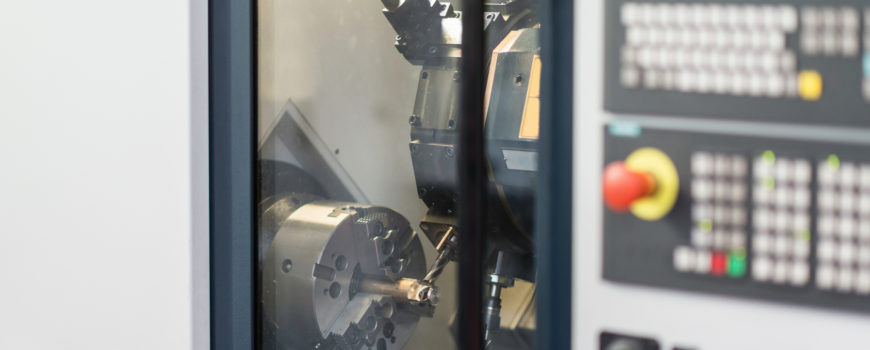In order to succeed, a machine shop needs to have an edge over its competitors. Looking for inefficiencies is a great way to start, and fixing those inefficiencies can give your machine shop the edge it needs.
Early Tool Decay or Tool Failure
It’s not common for your tools to fail or break often. Finding the right tool is important, but it’s also important to prolong the life of your tools. Some machinists think that using the tools too aggressively causes them to wear out faster, but if you aren’t pushing the tool to the full potential it can cause it to decay faster in some situations. There are different types of tool failure, which can include abrasive wear, chipping, or tool fracture. Understanding your tools can help you make sure that you are minimizing downtime, as well as saving money on any replacement costs.
By being able to identify different types of tool wear, you can be ready to fix any issues quickly and help extend the life of your tools. Abrasive wear will dull the cutting edge of the tool by mechanical abrasion from the piece. If you notice this type of wear, reduce the cutting speed or use coolant. Using high efficiency milling toolpaths can also help reduce wear. Chipping can be seen by a nick on the cutting tool, or seen on the finish of the part. Excessive loads can cause chipping. Reducing feed rates can help. Thermal cracking can be seen by cracks in the tool perpendicular to the cutting edge. This is caused by extreme temperatures and can be solved by adding a proper coating to give the tool heat resistance. When a tool fractures it causes complete loss of the tool, and this can be because of a wrong coating or the wrong speeds and feeds. Make sure to adjust speeds and feeds and optimize the right coolant use, in order to avoid any hot spots that can cause fracture.
Subpar Part Finish
With a subpar part finish you are not providing your customers with the highest quality product, and it will affect your buyer seller relationships. It also will not allow you to increase prices or attract potential customers in the future. Many factors can affect part finish, which include the material, hardness, speeds and feeds your shop is running, and tool deflection. You are employing machinists and should have the highest quality tools so make sure you are getting your money’s worth of both, and your products should have a good finish.
Inefficient Coolant Usage
Coolant can be expensive and is often an expense that many machine shops forget about. Too much coolant is often applied when it’s not needed, costing a machine shop more money. Some machines have a minimum quality lubricant function that applies coolant as an aerosol, so it’s provided just enough coolant to operate efficiently while saving the amount of coolant that can be used. Sometimes it is needed to drown a piece in coolant, but oftentimes it is not and you can get away with using less coolant to save money.
Coolant can be delivered in different forms, and if you choose the wrong pressure it can lead to tool damage, which you need to avoid. When applied as air, it does not cool as efficiently as oil or water based coolants, but it is good for sensitive materials. When coolant is applied directly to plastic it can cause rapid expansion or contraction. Use mist when heat is not a major concern. When applied as a mist, both the part and the tool don’t go through more stresses. When the coolant is applied as a flood, it can be a low-pressure method that helps flush chips from the part in order to avoid chip recutting and protect your tool from damage. High-pressure application can be similar to flood coolant, but can sometimes be enough to break diameter tooling so it must be applied carefully. This method is often applied into grooves that are already built into the tool. Look at the application of coolants as well as the coolants that you are using. You may be able to use less high-performance lubricant instead of a lot of lower performance options. Coolant can also be re-used to save money. We have a great system at Tag Team Manufacturing that allows us to re-use the coolant saving time and money in our machine shop.
Not utilizing tool versatility
Many CMC cutting tools will perform multiple operations. Depending on the job, you may be able to get away with a tool you already have instead of having to go out and purchase additional tooling.
There are a number of multi-function tools you should consider having in your shop. Not only can drill mills be used for drilling and milling, but they can also be used for grooving, spotting and chamfering. This means they provide five different uses. Undercutting end mills can also be used for some slotting and contouring operations, and depending on the situation, such as clearance challenges, this can actually be the first choice. Double angle shank cutters can be referred to as the “Swiss army knife of machine,” so you know they are a versatile tool. They have six different functions that include thread milling, chamfering, back chamfering, machine v-grooves, deburring, and countersinking. Flat bottom tools, including drills and counterbores, are best used for holemaking, but they can be used for a number of different functions. These functions include thin plate drilling, cross hole drilling, angled drilling, half hole drilling, removing drill points, and straightening misaligned holes. Adjustable chamfer cutters can do more than just chamfering and can be used for beveling, deburring, and spotting.
High Machine Downtime
If your machines aren’t running, then you aren’t getting the most of them. The key to helping your machine shop reach maximum efficiency is minimizing machine downtime. You can do this in a variety of ways, such as keeping like parts together. All you would have to do is swap in and out material and the machine can use the same cutting tool. This allows you to spend less time swapping out tooling and spend more time letting the machine do its job. This requires planning to help make the machine shop more efficient.
What Should You Do?
Implementing a proactive maintenance strategy instead of a reactive maintenance strategy can help you avoid some of these issues and gain a competitive advantage. Maintaining equipment so you have less failure and less machine downtime will make sure you aren’t scrambling to figure things out. Make sure you have a system set in place for inventory management, so you are managing costs as well as handling and storage. This is especially important for lubricants that are expensive and can take up a good amount of storage.





